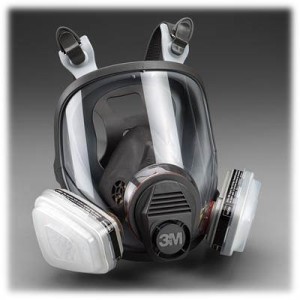Respiratory Protection for Non-Technicians

Are personnel who work near ammonia refrigeration systems required to be equipped with respirators per Title 8 CCR §5144 Respiratory Protection? This is a prudent question to consider before assigning employees to work near any hazardous material. The risk faced by personnel who inspect equipment, work in machinery rooms, on roofs, etc. yet never perform line break activities is real yet less than that experienced by bona fide technicians. One option to address this type of employee exposure is to prohibit employees from working in environments that exceed the Permissible Exposure Limit (PEL), which is 25 PPM for ammonia. Employees that must perform ancillary work near the system must have access to gas detection via fixed or personal sensors. In the event that ammonia is detected, they must be instructed to evacuate to a safe refuge area which is free from ammonia exposure. With this approach, you need not develop a full respiratory protection program; hence no respirators, fit tests, medical monitoring, etc. If the nature of the employee’s work will require exposure to greater than 25 PPM, a full respiratory protection program must be developed and implemented.
I’ve included our company policy regarding this subject below. Feel free to use it if you find it helpful:
————————————-
Resource Compliance has determined that employees may be exposed to respiratory hazards during routine visits to a client facility. The main respiratory hazard of concern is anhydrous ammonia which is utilized in industrial refrigeration and fertilizer storage processes. In addition, client facilities may store, handle, or use other hazardous chemicals such as chlorine, sulfur dioxide, and acrolein. Each of the above named chemicals present respiratory hazard risk to Resource Compliance employees. The purpose of this program is to ensure that all Resource Compliance employees are protected from exposure to these respiratory hazards.
Engineering controls, such as machinery room ventilation and local exhaust ventilation are the recommended first line of defense at Resource Compliance. In addition, Resource Compliance personnel expected to perform the following job functions are equipped with personal ammonia sensors:
- Mechanical Integrity Inspections
- Process Safety Information Site Visits
- Process Hazard Analyses
- Hazard Reviews
- Machinery Room Inspections
Resource Compliance does not provide respirators to its employees. In the event that a chemical release is detected in any quantity, employees have been instructed to immediately leave the release area. Ammonia concentrations above 25 ppm TLV-TWA must not be exceeded during a work shift. Under no circumstances may an employee work in an IDLH atmosphere.
List of exposure limits for chemicals stored, handled, or used at Resource Compliance client facilities includes:
| Chemical | PEL | STEL | IDLH |
| Ammonia | 25 ppm | 35 ppm | 300 ppm |
| Sulfur Dioxide | 5 ppm (REL = 2 ppm) |
5 ppm | 100 ppm |
| Chlorine | 1 ppm (REL = 0.5 ppm) |
1 ppm | 10 ppm |
| Acrolein | 0.1 ppm | 0.3 ppm | 2 ppm |
| Paraquat | 0.5 mg/m3 | N/A | 1 mg/m3 |
Definitions
PEL
The permissible exposure limit (PEL or OSHA PEL) is a legal limit in the United States for exposure of an employee to a chemical substance or physical agent. For chemicals, the chemical regulation is usually expressed in parts per million (ppm), or sometimes in milligrams per cubic meter (mg/m3).
STEL
A short-term exposure limit (STEL) is the acceptable average exposure over a short period of time, usually 15 minutes as long as the Time weighted average is not exceeded.
TLV-TWA
The average exposure on the basis of an 8h/day, 40h/week work schedule.
IDLH
IDLH is an acronym for Immediately Dangerous to Life or Health, and is defined by the US National Institute for Occupational Safety and Health (NIOSH) as exposure to airborne contaminants that is “likely to cause death or immediate or delayed permanent adverse health effects or prevent escape from such an environment.”
REL
A recommended exposure limit (REL) is an occupational exposure limit that has been recommended by the United States National Institute for Occupational Safety and Health to the Occupational Safety and Health Administration (OSHA) for adoption as a permissible exposure limit.

Leave a Reply